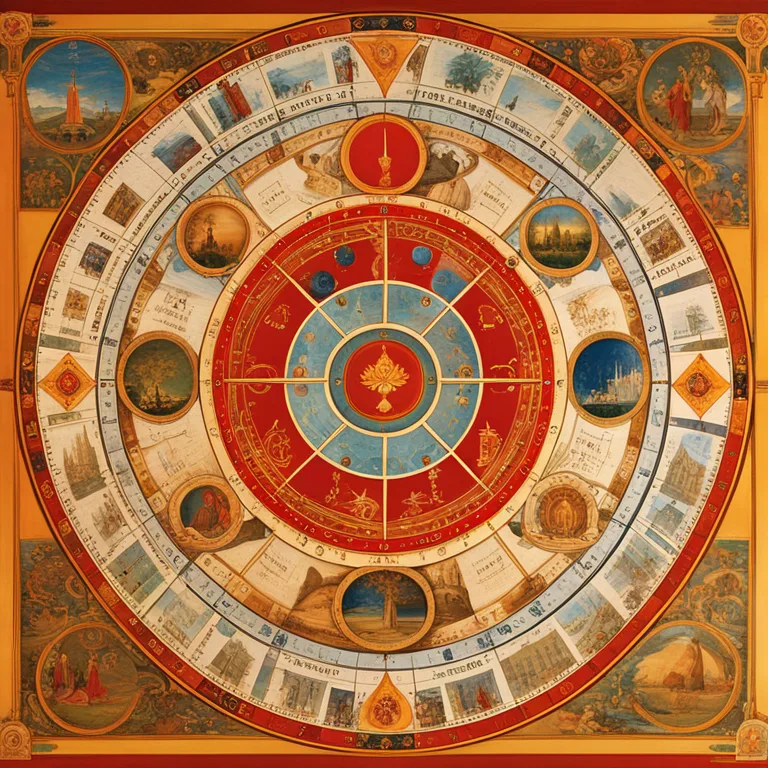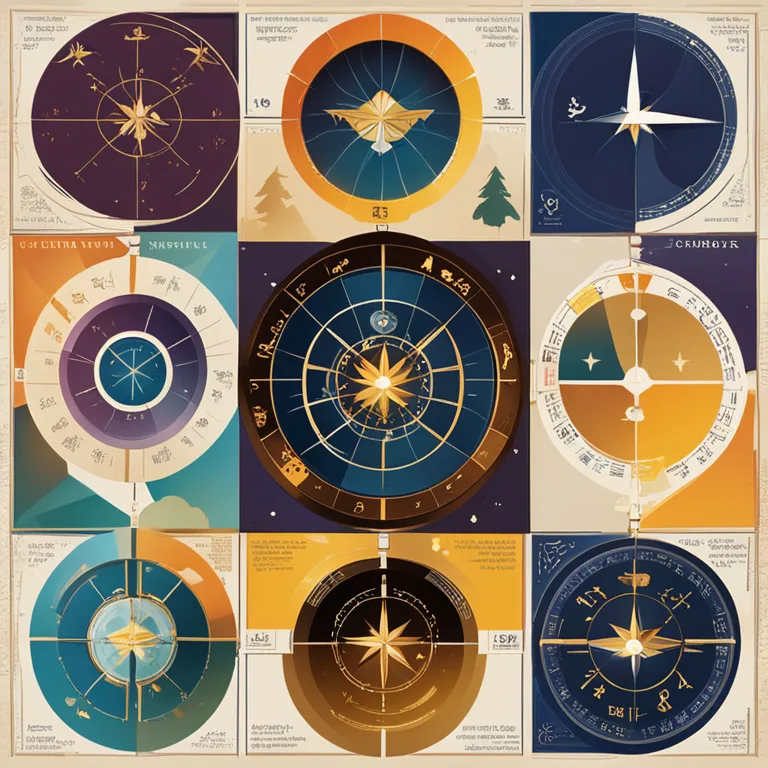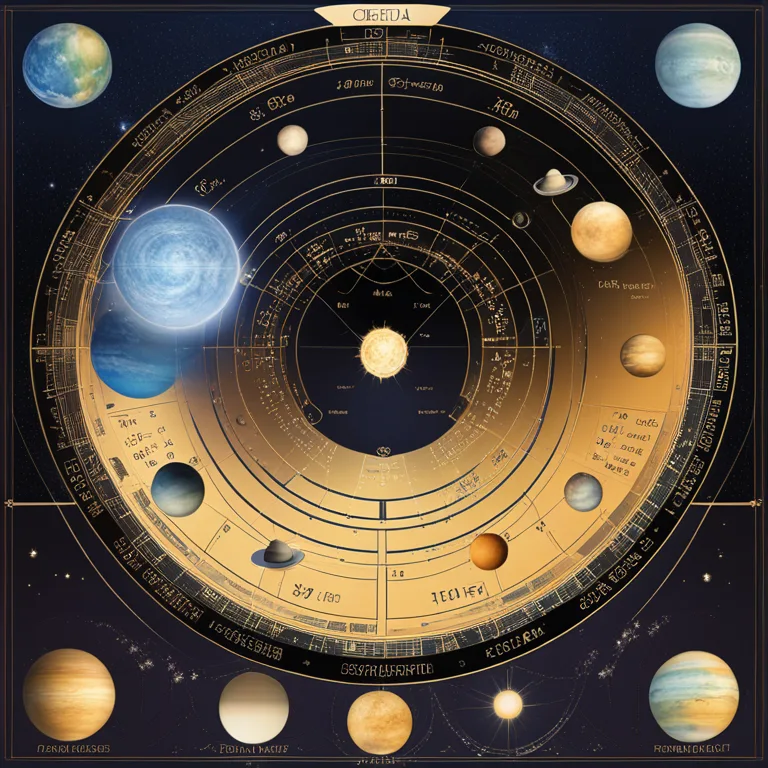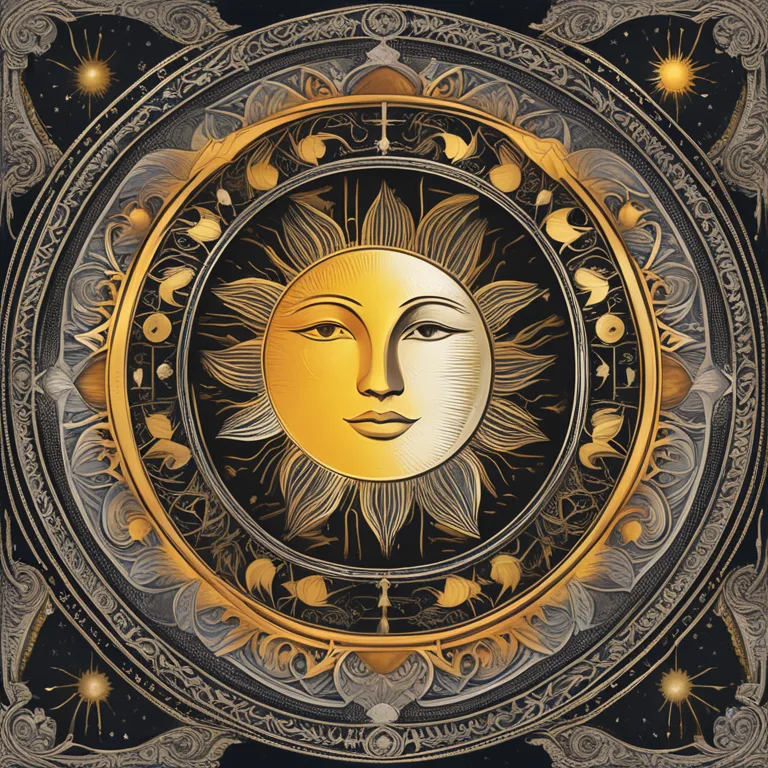
The Core of Birth Chart Elements
Delve into the fundamental components of birth charts to grasp the essence of your astrological profile.
article by Priya Deshmukh
Birth Charts: Astrology's Blueprint
A birth chart, also known as a natal chart, is a celestial snapshot of the sky at the moment you took your first breath. This intricate map charts the positions of the planets, the sun, and the moon, along with other pivotal points in the cosmos. Each element within the chart reflects different facets of your personality, destiny, and life path. Whether you are new to astrology or a seasoned stargazer, a firm understanding of these elements is essential. They serve as the building blocks of your astrological DNA, providing deep insights into your strengths, challenges, and potential.

The Quaternity of Elements
One of the first aspects to consider when examining a birth chart is the balance of the four classical elements: fire, earth, air, and water. Fire signs (Aries, Leo, Sagittarius) are associated with passion, creativity, and enthusiasm. Earth signs (Taurus, Virgo, Capricorn) embody practicality, stability, and sensibility. Air signs (Gemini, Libra, Aquarius) signify intelligence, communication, and sociability. Lastly, water signs (Cancer, Scorpio, Pisces) represent intuition, emotion, and empathy. Each sign's elemental association shapes how the planets express their influence in your life.

Celestial Bodies and Luminaries
In astrology, the sun and the moon are known as luminaries, playing a vital role in defining one's core identity and emotional makeup. The sun sign encapsulates your ego, will, and purpose, while your moon sign governs your inner self, feelings, and subconscious. Planets, on the other hand, each hold specific energies: Mercury rules communication, Venus oversees love and beauty, Mars drives action, Jupiter signifies growth, Saturn embodies discipline, Uranus heralds change, Neptune inspires dreams, and Pluto symbolizes transformation. These celestial bodies move through the zodiac signs and houses in your chart, creating a complex web of traits and experiences.

The Zodiac Signs' Influence
The twelve zodiac signs provide a zodiacal context to the planets' positions. Each sign infuses its characteristics into the planets residing within, influencing how those planetary energies manifest in an individual. Understanding the nuances of signs—from the pioneering Aries to the compassionate Pisces—is key to interpreting the full narrative your birth chart presents. Astrologers must consider the qualities of the signs—cardinal, fixed, and mutable—as well as their modalities and polarities to unveil a person's natural inclinations and life approach.

The Astrological Houses
Beyond elements and celestial bodies, astrological houses frame the stage upon which the cosmic dance unfolds. Each of the twelve houses corresponds to different life arenas, from self-image and resources to relationships and career. Their locations depend on the exact time and place of birth, making them uniquely personal. The planets and signs residing within these houses illuminate which parts of life are likely to be most impacted by astrological influences, providing a nuanced and detailed portrait of individual destiny and daily affairs.
Essential Angles and Aspects
To add further detail to the birth chart narrative, angles such as the Ascendant (rising sign), Descendant, Midheaven, and Imum Coeli offer additional layers of meaning. These points connect to identity, partnerships, societal standing, and the soul's foundation, respectively. Aspects—or angular relationships between planets and points—are the dialogues within your birth chart. Harmonious aspects, like trines and sextiles, suggest easy energy flow, while challenging aspects, such as squares and oppositions, indicate areas of tension that can be sources of growth and change.
Published: 12/22/2023
Modified: 12/22/2023
More predictions
Come back here soon to learn more about yourself and your future



